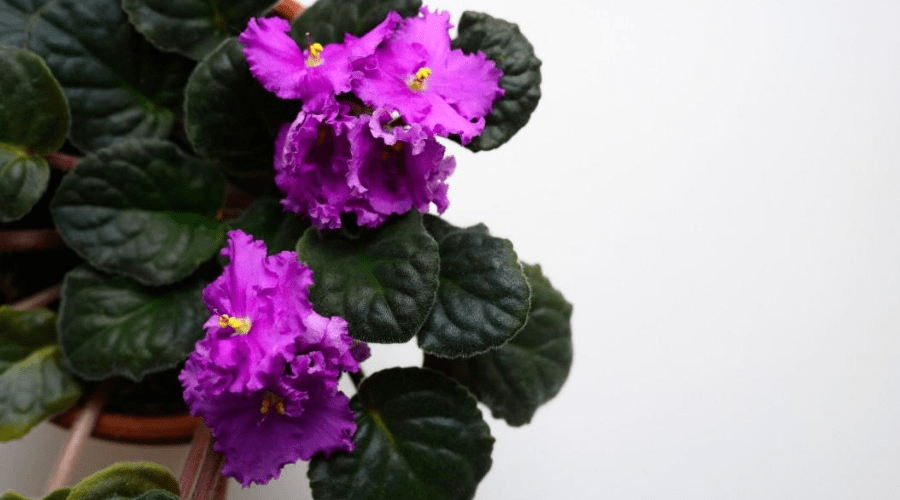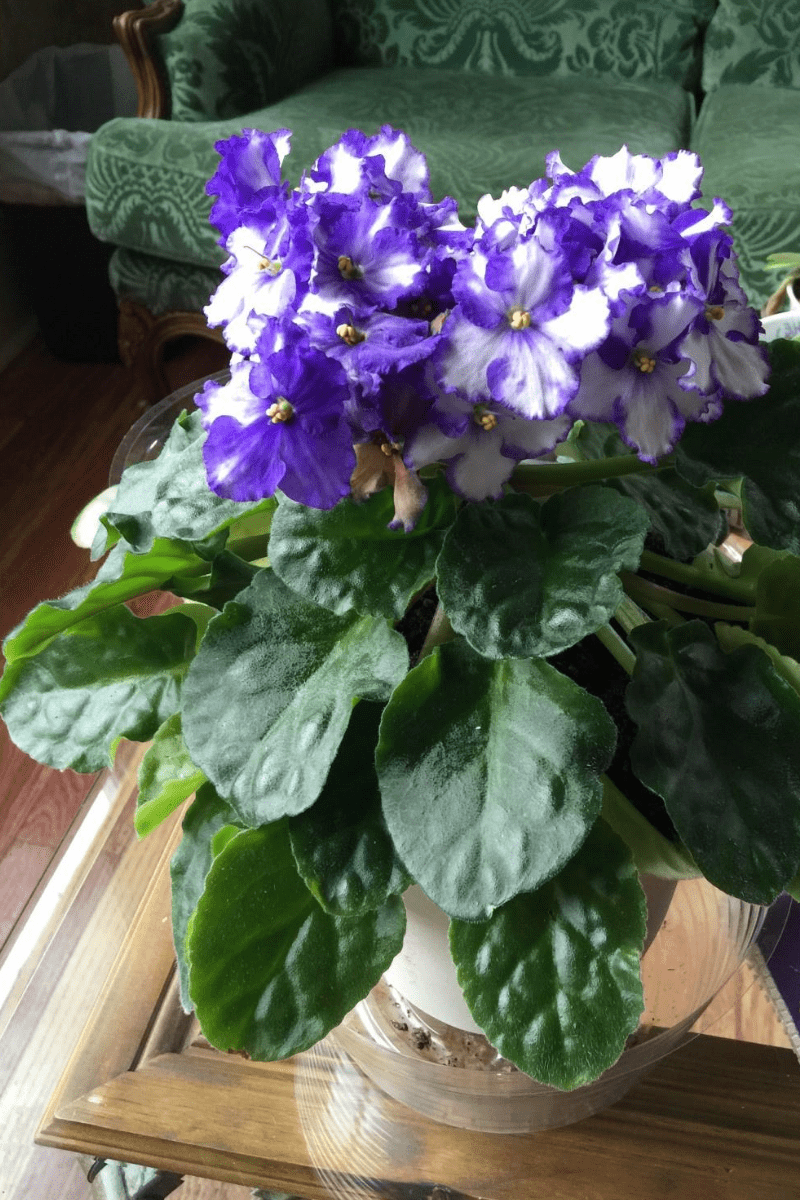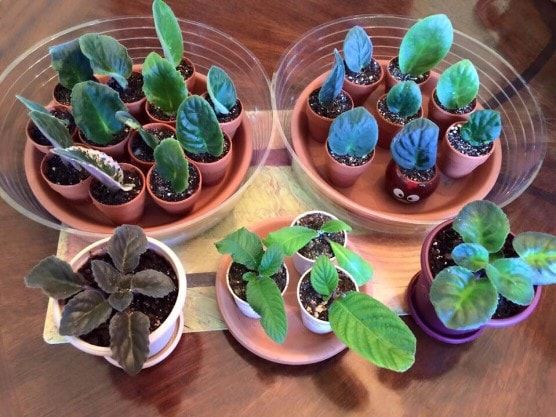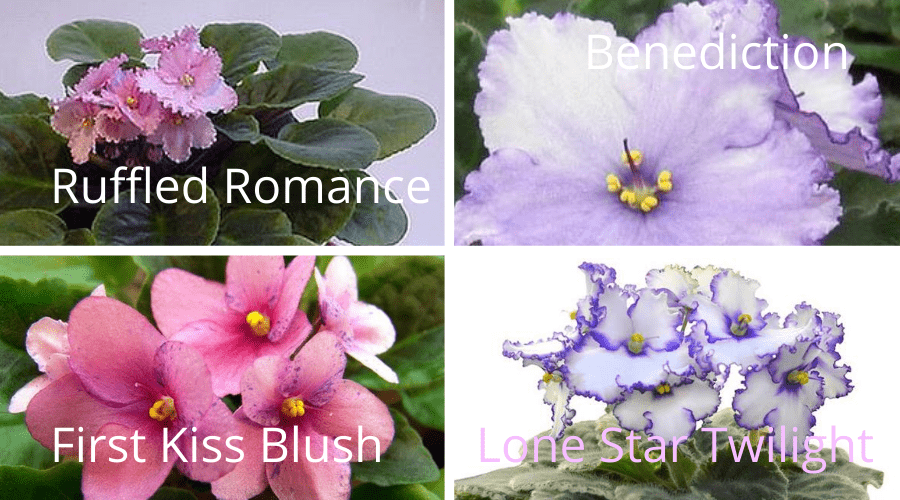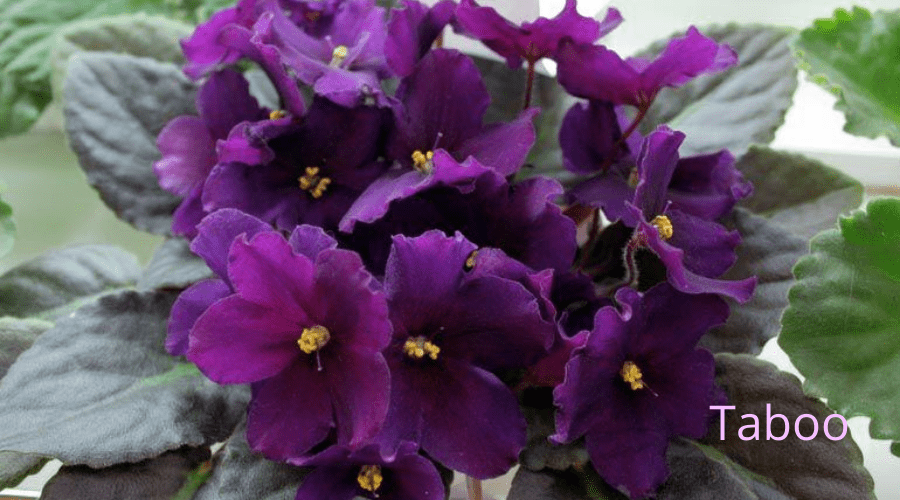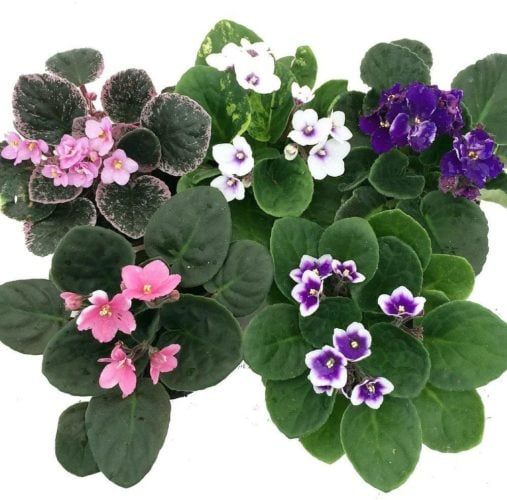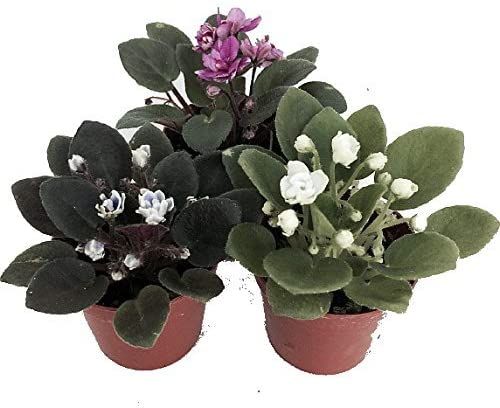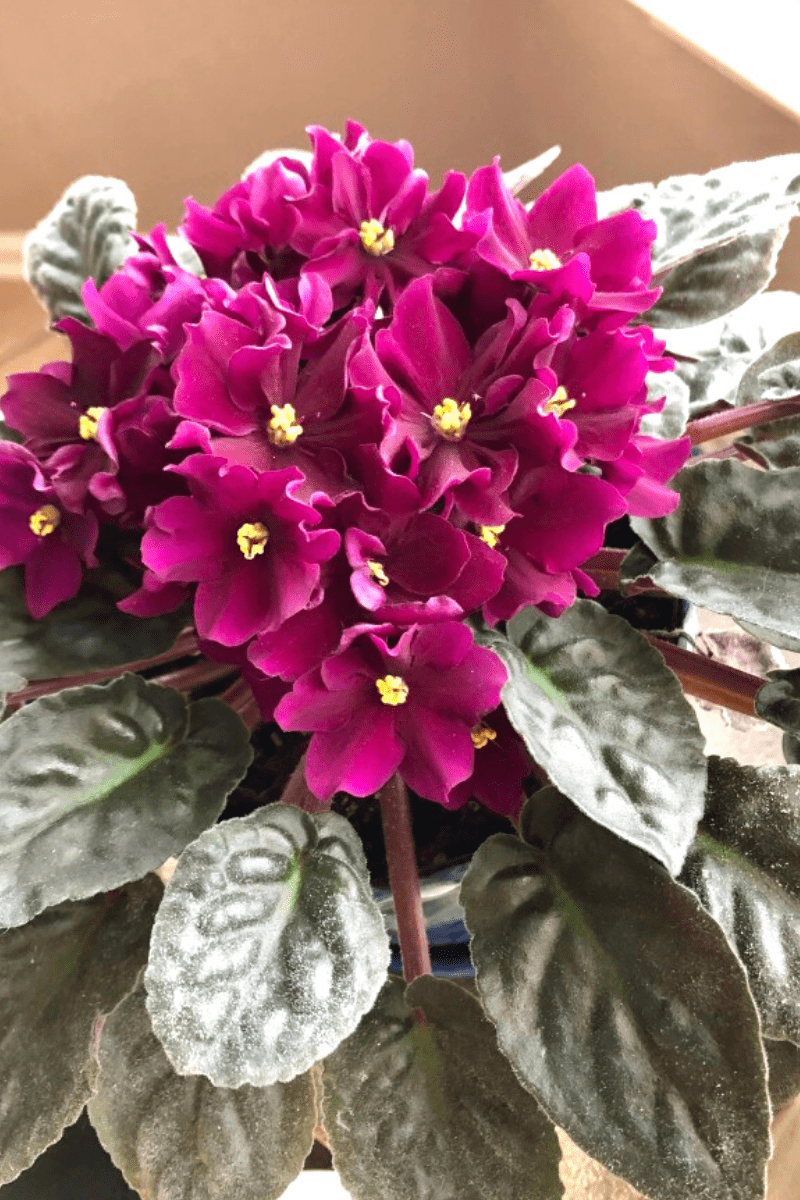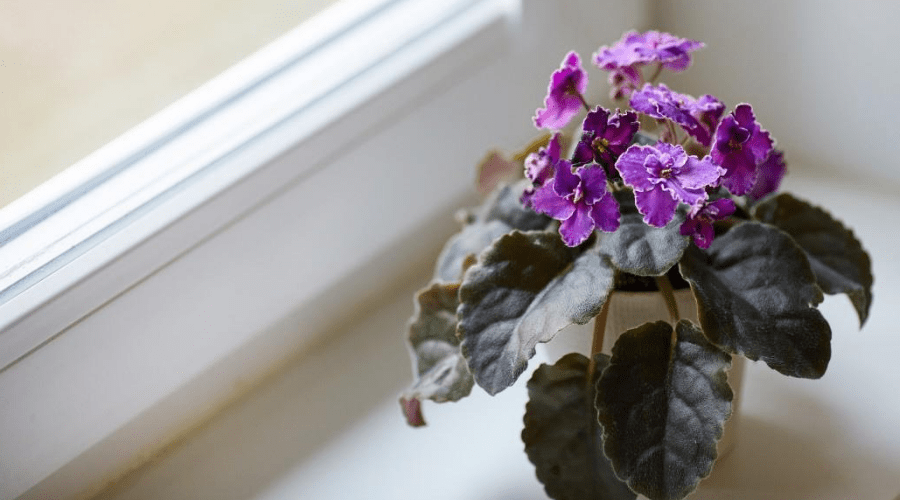African violets are one of the most popular house plants across the globe, with gorgeous blooms in an array of deep hues, a compact growing style that makes them ideal for the indoors, and low-maintenance care needs, as long as you keep a few growing instructions in mind.
Those instructions are included in this comprehensive planting guide on how to grow African violets, which includes watering, fertilizing, climate, and other care guidelines.
African Violet Details
Saintpaulia Ionantha
Ease of Care: Medium
Light: Bright
Water: Regularly
Temperature: 60 - 80 F
Height: 6 - 12 inches
Growth Rate: Medium
Pest: Cyclamen Mites, Mealybugs
Disease: Root Rot, Botrytis Blight
Toxicity: Nontoxic to humans and pets
African Violet Benefits
Similar to other indoor plants, African violets can make you happier just by brightening up your interior spaces. They can improve your mood by giving you a sense of accomplishment when you successfully care for them, which you will because you have this incredible guide to help you along the way.
They can also make you physically healthier by filtering pollutants from the air. They absorb gases within your house through their leaves and roots, process them to remove the pollutants, and then release oxygen back into your home. Having more oxygen can make breathing easier which can have a positive impact on functions like sleep.
African Violet Care
African violets have a reputation for being finicky plants, but as long as you keep their preferences and some simple care instructions in mind you should have no trouble successfully growing them.
Light
They love bright, indirect sunlight so place them on a windowsill with blinds. They can also flourish under close, fluorescent lights or grow lights. African violets like temperatures between 65 - 80 F, but really thrive at temperatures close to 70 F.
Water
Use warm or room temperature water for African violets, always keeping the soil moist, but never leave behind standing water. Water at the plant’s roots, or from beneath using a watering tray. It’s important that you avoid getting any water on the plant’s leaves because that can lead to the leaves developing brown spots.
Humidity
You can get the leaves a little wet when you mist the plant, which you should do frequently because African violets love humidity. Other options include using a humidity tray or putting your African violets near your home’s humidifier.
Soil
Use a well-drained potting soil for your African violets. Slightly underpot them in their containers, which absolutely should have adequate drainage holes. Only repot when it’s necessary. Your plant will let you know when that is by dropping leaves or having its roots protrude from the soil’s surface.
African Violet Pruning
African violets do require some basic, intuitive pruning.
When dead leaves or flowers appear on your beloved plant, immediately prune them using either your fingernails or sharp scissors. That way your plant can stop expending energy on them, directing its efforts towards producing new, healthy growth.
Don’t just remove dead matter from the plant, but also from its soil. A build-up of dead leaves beneath the plant can lead to root rot.
Otherwise, remove a few bottom leaves each month to keep your plant healthy. African violets have a stable growth rate and produce new leaves regularly, so this will balance the plant’s appearance, encourage new growth, and increase airflow.
African Violet Propagation
You love your African violets and want more, totally understandable! Luckily, you don’t have to run out and buy another plant, you can make one through propagation. There are two African violet propagation methods, one that uses leaf cuttings and another that involves dividing up your plant.
Propagation by Leaf Cuttings
This method is extremely easy and works for all kinds of African violet plants, just make sure that you do it in the early spring.
Using a pair of sharp, clean scissors, remove a leaf and its stem from the base of your plant. The piece of stem should be 1-2 inches long when removed.
To ensure that your leaf grows roots you can dip the bottom of the stem in rooting hormone, or you can take your chances. African violet leaf cutting propagation has a high success rate so those chances aren’t exactly low.
Fill a small pot with soil and make a hole in the middle of it. Place the cutting’s stem in the hole and press the soil firmly around it. Then, water it with warm water.
Cover the pot with a plastic bag, securing the bag tightly around it with a rubber band. Place the pot somewhere warm and bright.
Over the next couple of months keep the soil consistently moist. In 3-4 weeks roots should begin to appear and in 6-8 weeks new leaves should. Then, new plants will form at the cutting’s base which you can pull apart and repot to make new plants.
Propagation by Division
You can also grow a new African violet plant by dividing up your current one. This is a great and easy method for someone who has been growing African violets for a while, or whose African violet plant has outgrown its pot.
Cut the crown of the plant making sure that each piece still maintains a bit of the main plant’s central root system.
Replant the new plants in adequate, well-drained potting soil and provide them with the same love and care as you gave your original plant.
That’s it! Say hello to your new plant.
African Violet Varieties
There are thousands of African violet varieties to choose from. To make the task more manageable we have listed the most popular varieties, with descriptions, below.
Ruffled Romance
This African violet does not disappoint with lovely pink hues and delicate, crumpled petals that reek of romance.
Benediction
The beautiful lilac blossoms of this African violet look absolutely gorgeous in contrast with their yellow centers and dark green foliage.
First Kiss Blush
This playful variety has soft pink petals with splashes of bright purple. These colors paired with the flower’s bright yellow center make it an eye-catching choice.
Lonestar Twilight
Although this variety has white blooms it is anything but boring. In fact, the bright violet fringe on its petals makes its bloom’s unusual and breathtaking.
Taboo
Although these flowers may be Taboo you will not want to avoid them. Their deep reddish-purple blooms and dark green leaves give this variety passionate and romantic vibes.
Where to Buy
You can purchase African violets at your local garden center or online.
An excellent online option is Amazon, which has many varieties on offer in pots or seeds from some of the best known and well trusted garden supply companies.
Hirt's Gardens, for example, sell a Grower's Choice novelty variety in 4-inch clay pots.
Hirt's Gardens Novelty African Violet
The most popular blooming plant in the world is the African Violet. And for good reason, they bloom continuously, twelve months a year. Plus they are easy to grow, a filtered light window with warm temperatures is all you need. Keep evenly moist, not wet dry. The variety and color of the violet you will receive will vary with the season. Novelty African Violets are unusual varieties not normally found for sale.
JMBamboo offers an assortment of teensy African violets for terrariums or fairy gardens.
JMBamboo Miniature African Violets in 2-inch Pots
Excellent for terrariums or fairy gardens. Provide bright, indirect light, keep evenly moist, not wet or dry. The variety and color shipped will vary with the season and crop Shipped in 2-inch pots, 3 different colors.
FAQ: African Violet Growing Questions
African violets are relatively easy to take care of but you can run into a couple of issues when growing them. Below are the most common African violet growing problems you may encounter.
What are Common African Violet Growing Problems?
The most common African violet growing problem is not watering your African violet plant the correct way. If you get water on your plants leaves brown or yellow spots will appear which will ruin your plant’s look. To avoid this occurring consider watering your plant from beneath it. Use a pot with excellent drainage holes and place a saucer under it. Fill the saucer with warm water when you want to water the plant. Its roots will suck it up through the holes and you won’t put its leaves in any danger.
Another issue you may encounter is your plant failing to flower. If buds don’t open, turn brown, or fall off that normally means that its environmental conditions are unfavorable either because of cold temperatures, dry air, or overly wet soil, to name a few causes. Reread this guide and see if you are providing your plant with the perfect conditions for it to thrive. If you can determine what you are doing wrong then you can fix what is stopping your plant from flowering.
What are Common Pests that Attack African Violets?
There are two common pests that attack African violet plants. One is cyclamen mites, which are EXTREMELY small so you actually won’t see them, you will just see the havoc they wreak. They tend to feed on new growth, severely stunting your plant, and sometimes causing its leaves to curl, leaf hair to turn grayish, and flower buds to fail to open.
To prevent this from happening make sure you space your plants out so the mites can’t travel from one to the other. Prune infested branches and leaves and discard fully infested plants, and use diluted bleach to clean the pots they were in.
To fully combat these mites, take your plant outside and spray it with indoor plant miticide.
Mealybugs can also attack African violets. They are easier to spot with ¼” long soft, white bodies. They can cause stunted, unusually shaped leaves and can even kill your African violet if you let the infestation get bad enough.
To prevent mealybugs, inspect your new plants for mealybug eggs before bringing them inside. You can get rid of mealybugs by dipping a cotton swab in rubbing alcohol and using it to remove them from your plant.
For heavy infestations, take your plant outside and spray it with an insecticide that contains acetamiprid, cyfluthrin, or permethrin. Repeat every three days as needed.
What are Common Diseases that African Violets Can Get?
Root rot is not only one of the most serious problems that African violets face, it is one of the most serious problems that house plants in general can face because of poor soil or inadequate drainage in their containers. If your African violet plant’s crown roots start to become mushy then it is experiencing root rot.
Discard parts of the plant that are severely infected, get new well-drained soil, and make sure that you are watering your plant the correct amount, not leaving any residual standing water on the soil.
Another disease that can infect African violets is Botrytis blight. This is caused by a fungus, Botrytis cinerea, praying on your plant, causing leaves, flowers, and stems to turn a dark brown-grayish color.
Discard all infected plant materials. To prevent this disease, improve airflow around your plant and avoid getting its leaves wet in the first place.
Are African Violets Toxic?
African violets are not toxic to humans or pets. That doesn’t mean that you should let your kids, dogs, and cats have at them, but if they do end up eating them there should not be any problems.
Conclusion
These gorgeous plants are beautiful while in bloom, with stunning, brilliant blossoms, and when not, with fuzzy, dark green foliage. African violets are one of the best flowering house plants you can grow indoors being absolutely delightful to grow, and easy to grow, if you know what you are doing.
Which now, because of this guide, you do!
I hope you enjoyed this guide! If you did, be sure to share it and comment below with any questions!

